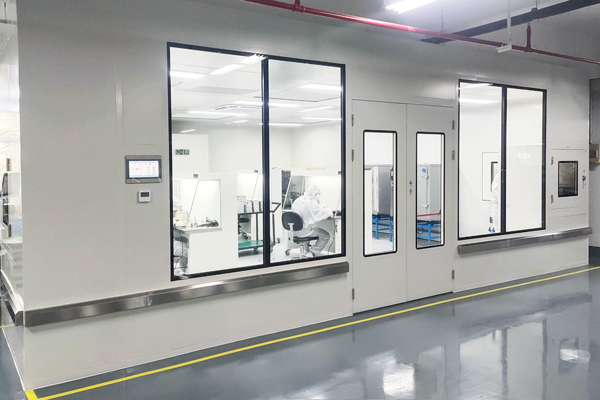Designing an effective airflow control system for an optical cleanroom requires careful planning and expertise. Here are some key considerations:
1.Air Change Rates:
The number of times the air within the cleanroom is replaced per hour is critical. For ISO Class 5 cleanrooms, air change rates typically range from 200 to 600 per hour. The exact rate depends on the specific processes and contamination risks.
2.Filter Placement:
HEPA or ULPA filters should be strategically placed to ensure uniform air distribution. In vertical laminar flow cleanrooms, filters are typically installed in the ceiling, while horizontal laminar flow cleanrooms have filters on one wall.
3.Pressure Differentials:
Maintaining positive or negative pressure differentials between adjacent areas prevents cross-contamination. For example, a coating room may require negative pressure to contain hazardous fumes, while an assembly area may need positive pressure to keep contaminants out.
4.Monitoring and Control Systems:
Advanced airflow monitoring systems are essential for maintaining cleanroom standards. Real-time sensors can detect changes in airflow velocity, pressure, and particulate levels, allowing for immediate adjustments.
The Impact of Airflow Control on Product Quality and Yield
In the optical industry, the cost of failure is high. Defective components can lead to costly rework, delays, and even product recalls. Effective airflow control directly impacts product quality and yield by:
A.Reducing the risk of particle contamination during critical processes.
B.Ensuring consistent environmental conditions for sensitive materials.
C.Minimizing the need for rework and improving overall production efficiency.
Airflow control is not just a technical requirement for optical industry cleanrooms—it’s a cornerstone of quality and precision. By investing in advanced airflow control systems and adhering to best practices, optical manufacturers can achieve higher yields, lower costs, and superior product performance. As the demand for high-precision optical components continues to grow, optimizing cleanroom airflow control will remain a key differentiator for industry leaders.
Post time: Mar-07-2025

